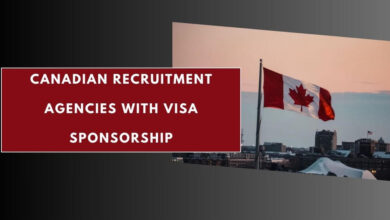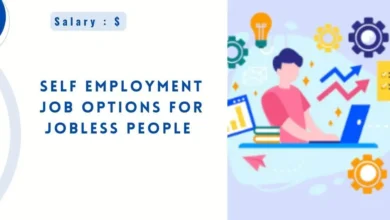Canada New Visa Rules in 2025 | Canada Immigration
The new Canadian immigration regulations, as well as the challenges encountered by students and transitory residents, will be the subject of our discussion. We will focus on the conclusion of Flagpoling. The student and temporary residence visa and permit procedures in Canada have undergone recent changes. This guide provides a comprehensive explanation of the modifications and their implications.
Canada’s New Visa Rules
Canada has announced substantial enhancements that will affect transient residents and students. The objective of these modifications is to improve the visa and permit procedure. The discontinuation of border flagging for post-graduation work permits (PGWPs) is a substantial modification. Additionally, the federal and provincial administrations are still in the process of deliberating immigration regulations.
This post will provide a comprehensive overview of the changes, their potential impact on temporary employees and foreign students, and the implications for Canada’s immigration and study visa policies in the future.
What is Flagpoling?
Flagpoling is the act of transient residents of Canada, such as those with work permits or study visas, temporarily departing the country and subsequently returning to expedite the processing of their immigration documents. This method has become increasingly popular in Canada due to its ability to expedite the process of obtaining permits for applicants.
Why is flagpole coming to an end?
Flagpoling will be discontinued, as announced by the Canadian Minister of Immigration. The primary concern is that it diverts the attention of frontier officers from their primary obligation to ensure national security.
The processing of immigration documents at the frontier has an impact on the efficiency and efficacy of border security operations. The government aims to address this issue by expediting the processing of applications within Canada, thereby enabling transitory residents to obtain the necessary permits without the need to resort to flagpole.
Enhancements in Processing Times
To compensate for the cessation of flagpole, the Canadian government plans to enhance the nation’s processing infrastructure. One aspect of this is the reduction of the time required to process applications that are submitted domestically. As a consequence of these developments, the procedure will become more efficient and less dependent on frontier contacts.
Provincial vs. Federal Tensions
Continual hostility exists between the federal government and regions such as Quebec in relation to immigration laws. Provinces have expressed concern regarding the federal government’s immigration objectives and its capacity to accommodate new residents.
Provincial Concerns
The provinces, particularly Quebec, contend that the federal government’s immigration objectives are unattainable due to the infrastructure’s current state. They emphasize the absence of sufficient housing and healthcare to facilitate the expanding immigrant population. The provincial resources have been substantially strained as a result of the significant increase in Quebec’s population, which has been 270,000 over the past two years, primarily due to immigration.
The Position of the Federal Government
The federal government believes that immigration must be increased in order to address labor shortages and stimulate economic development in the country. They emphasize the importance of a coordinated approach to effectively regulate immigration and ensure that newcomers can assimilate into Canadian society.
Possible Referendum
Quebec has suggested conducting a referendum to provide its citizens with a voice in the federal government’s immigration policies. This action is indicative of the province’s unwavering commitment to the autonomous regulation of immigration and the prioritization of the needs and preferences of the local population.
Consequences for Students Abroad
The repeal of the flagpole and the modifications to immigration laws have a significant effect on international students who are studying in Canada. The following are important for students to be aware of:
Applying for Study Permits and PGWPs
International students will be required to rely more heavily on Canada’s standard administrative routes for their study permits and PGWPs. Despite the fact that students must meticulously organize their applications to reduce the risk of delays, the government’s commitment to reducing processing times should alleviate some concerns.
Staying Informed
It is imperative that students are informed of the most recent information provided by Immigration, Refugees and Citizenship Canada (IRCC). One method of effectively navigating the changes is to consult with immigration advisers at their respective institutions and frequently visit the IRCC website.
Effect on Employment Possibilities
The PGWP is indispensable for international pupils who intend to acquire employment in Canada subsequent to their graduation. Despite the initial impression that the elimination of flagpoling is a setback, the increased processing times in Canada will ensure that students can still capitalize on these opportunities without experiencing unnecessarily long delays.
Getting Around the Changes
According to the most recent modifications to its immigration and visa laws, Canada is dedicated to maintaining a balance between the necessity to expedite administrative procedures and security concerns. The government is striving to mitigate these issues by expediting processing times within Canada, despite the fact that some individuals may find the conclusion of flagpoling to be challenging.
Temporary laborers and international students must maintain a proactive and informed attitude in order to effectively navigate these changes and capitalize on the opportunities that Canada provides.
Enhanced Framework and Prospective Pathways
In order to understand the broader implications of these changes, it is imperative to examine the context of Canada’s immigration landscape, the significance of international students to the Canadian economy, and potential future directions for immigration policy.
Canada’s Immigration Landscape
The demographic and economic development of Canada have been significantly influenced by its hospitable immigration policies, which are widely recognized. Immigration is crucial for the preservation of the workforce and the promotion of economic development, as a result of an aging population and low birth rates. In the past, policies have been designed to encourage the recruitment of entrepreneurs, qualified workers, and international students in order to support various industries.
International Students’ Role
Canada’s economic growth is significantly influenced by international education. They contribute to the cultural diversity of Canadian towns and institutions by generating billions of dollars in revenue annually through living expenses and tuition. After graduating, a significant number of international students become permanent residents, which helps to address skills shortages and occupy critical roles in the workforce.
Difficulties with the Current Framework
The current immigration system has issues, despite its benefits. The federal and provincial administrations have been embroiled in conflict as a result of processing delays, bureaucratic obstacles, and geographical disparities in the acceptance of new immigrants. Although the most recent policy reforms have addressed some of these issues, there is still a significant amount of work that must be done to establish a more equitable and effective system.
Check Also: Visa Sponsorship Research Assistant Jobs in UK (£32,025 Yearly)
Benefits of Canada New Visa Rules:
- More rapid processing times: To mitigate visa processing times, Canada has implemented novel systems and procedures. This results in expedited approvals for work permits, student visas, and residency applications for a significant number of applicants. The objective is to expedite the process of entry into the country and eliminate backlogs.
- Increased Employment Prospects for International Students: Under the revised visa regulations, international students who are enrolled in Canada are now permitted to labor for a minimum of 20 hours per week during their academic sessions. This modification enables students to generate additional income while they are enrolled in school, which enables them to pay for their living expenses and acquire valuable Canadian work experience.
- Streamlined Routes to Permanent Residency: The new regulations offer temporary foreign laborers, international graduates, and skilled immigrants more flexible and transparent pathways to permanent residency (PR). The transition from temporary status to permanent residency has been simplified by the modification of programs such as Express Entry and Provincial Nominee Programs (PNPs) to prioritize applicants who contribute to Canada’s economic requirements.
- Enhanced Immigration Objectives: By 2025, Canada intends to admit more than 500,000 immigrants annually. This expansion increases the number of opportunities for educated workers, families, and refugees to enter Canada, thereby increasing the country’s accessibility to individuals worldwide.
- Emphasis on Skilled Personnel: The significance of importing highly skilled workers to address labor shortages in critical sectors, including healthcare, technology, and construction, is underscored by Canada’s recent regulations. The Express Entry system has been altered to prioritize individuals with highly sought-after talents, thereby simplifying the process of obtaining visas and permanent residency for those who meet the criteria.
- Facilitation of Family Reunification: To facilitate the reunification of Canadian residents or citizens with their spouses, children, and other family members, the new visa regulations have been implemented. Changes include more flexible rules for dependent children and parents, as well as faster processing periods for spousal sponsorship.
- Flexibility of Post-Graduation Work Permit (PGWP): The Post-Graduation Work Permit Program (PGWP) has been revised to provide international students with increased flexibility. Graduates of eligible Canadian institutions may now petition for an extension of their work permits, which will allow them to accumulate more work experience in Canada. This experience may be utilized to qualify for permanent residency.
- Open Work Permits for Spouses: The new regulations permit spouses of foreign workers in Canada to file for open work permits, which will enable them to work for any employer in Canada. This benefit applies to the spouses of temporary foreign workers, international students, and individuals with valid work permits, thereby enhancing their capacity to contribute to household income and assimilate into Canadian society.
- Assistance for Refugees and Asylum Seekers: The support for refugees and asylum seekers in Canada is further bolstered by the country’s new visa policies. The government has facilitated the settlement of refugees in Canada by implementing a variety of humanitarian programs and reducing the processing time for asylum claims. This ensures that individuals who are escaping conflict and persecution receive protection at a faster pace.
- Introduction of the Digital Nomad Visa: The Canadian government has announced its intention to implement a Digital Nomad Visa, which will enable foreign remote workers to temporarily reside and operate in Canada while serving international employers. This visa is intended for digital professionals who desire to immerse themselves in the Canadian lifestyle without the necessity of a Canadian employer sponsor.
Possible Courses for the Future
Improved Digital Infrastructure
Investments in digital infrastructure can significantly reduce processing times by optimizing application processes. The utilization of automated decision-making and document verification techniques can facilitate the more efficient management of the volume of applications.
Federal-Provincial Cooperation Framework
A framework for increased collaboration must be established by the federal and provincial administrations. This involves ensuring that resources for immigrant assistance are distributed fairly and balancing immigration objectives with local capacity.
Put Integration Programs First
To facilitate the integration of foreign pupils and immigrants into Canadian society, it is imperative to enhance integration initiatives. Immigrants’ retention and overall experience can be improved through initiatives that promote language learning, job assistance, and community participation.
Flexible Immigration Policies
The labor market’s demands can be more effectively met by enhancing the flexibility and responsiveness of immigration laws to changing economic circumstances. This involves the revision of the requirements for permanent residency and work permits to align with the current circumstances.
Suggestions for Students and Temporary Employees
The following practical advice can assist students and transitory employees in navigating Canada’s immigration system in light of these updates and potential future paths:
Seek Expert Advice
Consult the immigration specialists or counselors at your institution for personalized guidance and support throughout the application process.
Employ Institutional Resources
Numerous educational institutions offer resources and support services to international students. Utilize counseling services, workshops, and information sessions to remain informed and prepared.
Conclusion:
The new immigration regulations in Canada will have a significant impact on students and transitory residents, particularly the elimination of flagpole. All of these modifications are intended to simplify procedures and improve overall efficacy throughout Canada.
To negotiate these developments effectively, temporary laborers and international students must be proactive and well-informed. By doing so, they can continue to capitalize on the opportunities that Canada offers.
Frequently Asked Questions:
What is the minimum balance for a Canada visa?
As a general guideline, it is advised to maintain a balance of at least CAD 10,000 i.e. Rs. 6,30,000 when applying for a tourist visa to Canada.
What are the new rules for Canada 2025?
Canada has updated rules for the Post-Graduation Work Permit (PGWP), effective from November 1, 2025. These changes include stricter guidelines for college graduates, focusing on specific fields of study. Popular programs like business and hospitality are excluded, impacting many international students.
What is the new visa scheme in Canada?
The Canada Start-Up Visa Program is a business immigration program dat allows foreign entrepreneurs to obtain permanent residence in Canada by starting innovative businesses. Successful applicants and their families can relocate to Canada within 3 to 6 months and obtain permanent residency within 2,5 to 3 years.




